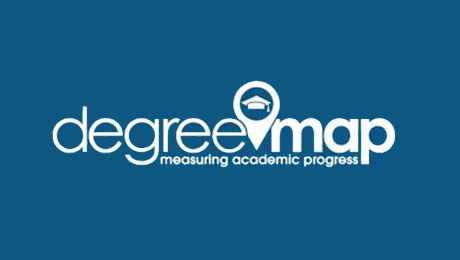It’s 2 a.m., and you’re cramming for a midterm. Your head is spinning, and you begin contemplating your career goals. “Will some of my major requirements satisfy a Spanish minor?” you wonder. “What if I add a second major or a new concentration? Would I be able to graduate in four years? Or maybe even three?”
For many undergraduates, the scenario is all too familiar. Now, with the push of a button, George Washington University students can explore endless academic scenarios, anywhere at any time.
Most students are already familiar with DegreeMAP—a tool accessed through GWeb that enables them to monitor their progress toward a specific program’s degree requirements. DegreeMAP’s “What If” functionality goes a step further by allowing students to explore requirements for degree programs other than their own.
Beginning Wednesday, the “What If” function will be available for students to access on their own through GWeb.
A student could, for instance, view which courses he has left to fulfill if he wanted to add a major, a minor, a concentration or switch to a different degree program. Another aspect of the “What If” function is the “Look Ahead” feature. This enables students to insert a particular course or courses and then view which requirements those hypothetical classes would satisfy.
University Registrar Beth Amundson believes the advantage of the “What If” tool is twofold: Students can now independently navigate through different combinations of majors and minors, which will subsequently allow them to make better use of their time with an adviser.
“We wanted to make this function readily available as soon as possible. It really fits in with the university’s strategic plan,” she said. The idea of making a “What If” feature available to students was first proposed during one of the student town hall meetings on the strategic plan.
During the 2013 Faculty Assembly in October, Provost Steven Lerman unveiled some of the goals of the plan—one being the removal of the “unnecessary barriers” students sometimes face when changing or adding a major. Currently, undergraduates who want to transfer into a different academic school must submit a request to the Undergraduate Admissions Office.
In the future, university leaders are planning for undergraduate students to be admitted to the university at large, instead of being admitted to individual schools, thus allowing students to more easily pursue new academic pathways.
While this plan is still in the works, the “What If” function gives students the power to explore the full range of academic options.
“One of the reasons why students find GW such an attractive option is the range of offerings we provide. The functionality we are adding to DegreeMAP, along with our efforts to further remove barriers, is designed to ensure that students can take full range of our offerings,” said Dr. Lerman.
Varsha Sundararaman, a sophomore in the Elliott School of International Affairs and chair of the Student Association Senate’s Academic Affairs Committee, said she wished she had access to the “What If” tool when she was a freshman.
Since there is overlap between class requirements for different majors, minors and concentrations within the Elliott School, Ms. Sundararaman said the function will help her more easily decide which academic path to pursue. On Monday, she and other members of the Student Association previewed and offered feedback on the tool.
“I’m really excited for this. It’s something I’ve been trying to do for a long time—being able to move around different classes and create different scenarios,” she said. “This will save a lot of time.”
As a GW House Staff member, Avani Singh said is looking forward to showing the “What If” function to her residents.
“It will be really great to have this to show freshmen how they can explore different opportunities, because that process can be really overwhelming for many of them,” said Ms. Singh, an Elliott School junior and the Student Association’s director of student services. Additionally, Ms. Singh, who is hoping to graduate early, said she now will be able to easily find out if there is a minor she is close to completing.
While the “What If” function is a terrific way for students to begin planning for future semesters, it is not a replacement for an adviser, Ms. Amundson stressed.
“This is merely a tool to help a student explore his or her options,” she said. “Advisers will determine if they will actually be able to meet the degree requirements.”


